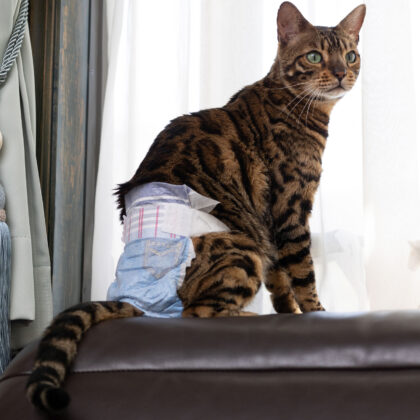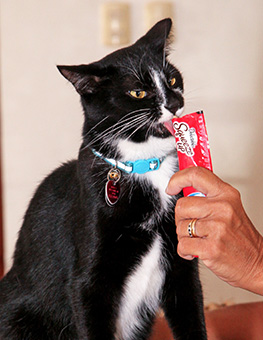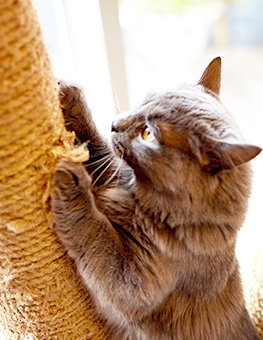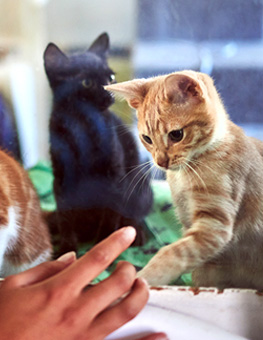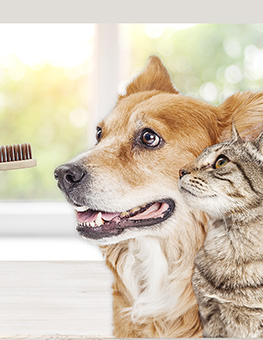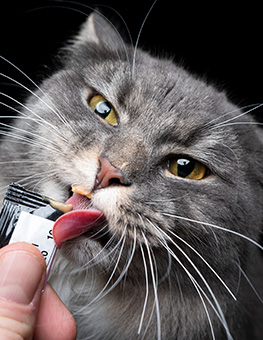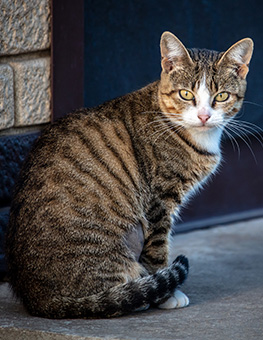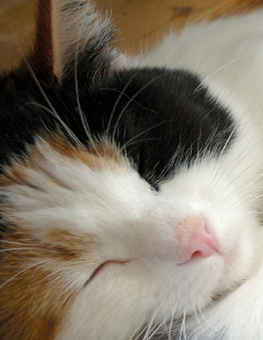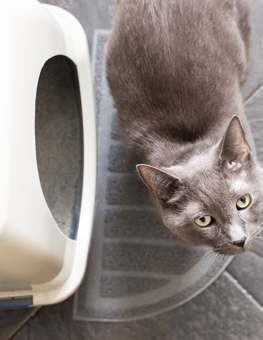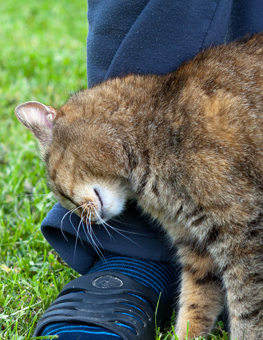Dealing With Aggressive Cats
Even seasoned cat owners can be alarmed by aggressive cat behavior.

When your cat acts out, first find out the reason behind the aggressive behavior to understand and resolve it.
It’s never fun to have to share your home with an aggressive cat. Your aggressive cat’s behavior can cause stress, damage your relationship, and even cause serious harm to you or your other pets. Aggressive cat behavior that is a quality-of-life concern to you is equally a quality-of-life concern for your cat.
Reasons Behind Aggressive Cat Behavior
Your cat is not acting aggressively because he just wants to be a jerk. There is always a reason behind the behavior. The first thing you should ask yourself is, “What’s the function?” What is the reason behind your aggressive cat’s behavior? Why are they acting this way? If you know the function, you can begin to understand where your cat is coming from and how to resolve the aggression.
Pain and Illness
Pain and illness are the number one reasons that your once friendly cat may suddenly become irritable and aggressive. In the case of any sudden behavior change, a trip to the veterinarian should be your first priority.
If you're very familiar with your cat and he's started showing signs of aggression for seemingly no reason, don't assume that he's misbehaving or has suddenly changed his personality. His aggression could stem from a health issue, so you'll want to visit the veterinarian as soon as possible to ensure that he's healthy. Once you have ruled out a medical issue, then you can move forward to determine other causes.
Avoid Punishment
Punishment is never the answer for aggressive cat behavior. Your cat will not understand why he’s being smacked or squirted with water. All punishment accomplishes is harming your relationship with your cat. It does not teach him what you want from him, and does not address the root of the problem.
Likely, if your cat is showing aggressive behavior, he is scared, anxious, or stressed. You need to show him that he is safe and that he can trust you, and this is not accomplished with punishment.
Context is Key

Prolonged petting or touching can be a trigger for many cats.
What is happening before your cat swats or hisses? What happens during, and after? These are referred to as the “ABCs” of behavior: antecedent, behavior, consequence. They can help address the function of the behavior.
- Play. Often, cat owners mistake aggression for play. Is your cat quietly stalking you before pouncing? Chasing your other cat around the house? Biting you instead of his toys? “Play aggression” can be especially common in young cats and kittens, especially those raised as single pets.
- Confrontation. Your cat may become aggressive when cornered, or when scolded or punished, as a form of self-defense.
- Petting. Prolonged petting or touching can be a trigger for many cats. Stick to petting your cat on the head, only for short periods of time if petting causes your cat to become aggressive.
- Restraint. If you must physically manipulate your cat, such as when giving medication, they may retaliate with aggressive behavior.
- Fear. If your cat is scared, they’re going to try to make the scary thing go away, plain and simple.
- Frustration. If the cat isn’t able to get what he wants, he could lash out and become aggressive. This is common in cats who are kept in cages or enclosures.
- Pain and discomfort. We already discussed this, but it’s worth bringing up again. You may notice that your cat is aggressive during touching or handling when he wasn’t before. This likely indicates pain.
- Redirection. Redirected aggression occurs when the cat can’t get to the thing that is causing him to become upset, so he attacks the closest animal or person he can get to. This is also sometimes referred to as misplaced aggression.
Common Mistakes When Dealing with Aggressive Cat Behavior

When a cat can’t get to the thing causing him upset, he may attack the closest animal or person.
- Punishing your cat. Your cat is simply trying to communicate to you that he needs something. Punishment can increase aggression.
- Not reading body language. Your cat is talking to you all the time. Knowing his warning signs can help to prevent attacks and keep aggression from escalating.
- Thinking your cat is being spiteful. Cats are not capable of feeling spiteful or angry. However, they can be afraid, anxious, and stressed.
- Not getting professional help. If your cat's problems are out of your comfort zone and he is causing physical harm to you or other pets, enlist the help of your vet and/or a behavior consultant immediately.
Aggressive cat behavior can be a daunting situation for even the most seasoned of cat owners. The hissing, the clawing and everything in between can snowball into an incredibly stressful issue. Knowing the function of the behavior and working with your pet based on the context and reason behind the aggression will allow you and your cat to share the home peacefully once again.
References: Herron, Meghan E., et al. Decoding Your Cat: The Ultimate Experts Explain Common Cat Behaviors and Reveal How to Prevent or Change Unwanted Ones, Houghton Mifflin Harcourt, Boston, 2021, pp. 143–164.



